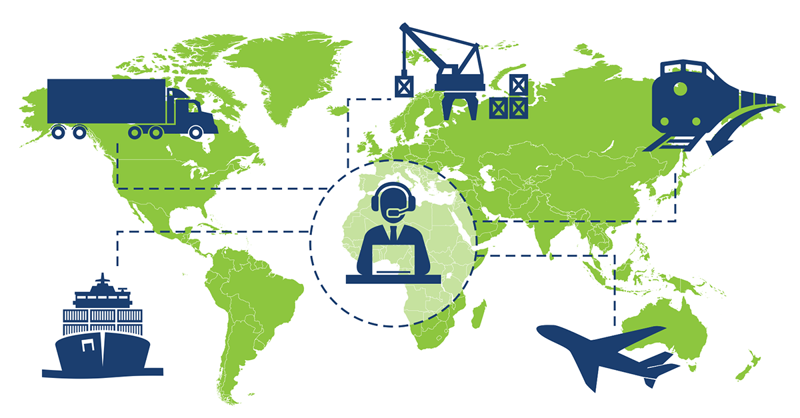As both B2B and B2C eCommerce pick up international steam, the need for a well-managed global cargo chain is more important than ever.
With many moving parts made up of people, information, processes, and resources—that must all work together to get the item from the first mile to the last mile—there are plenty of chances for it to misfire, leaving customers unhappy and logistics costs high.
And as retailers continue to roll out omnichannel strategies, managing logistics processes will become even more difficult, with diminished visibility, and loss of quality control and sales.
According to a report from international consulting firm McKinsey & Company, on average, “companies that aggressively digitize their supply chains can expect to boost annual growth of earnings before interest and taxes by 3.2 percent – the largest increase from digitizing any business area – and annual revenue growth by 2.3 percent.”
To help support omnichannel shipping strategies, many within the supply chain are turning to integrated technologies, according to the 2019 23rd Annual Third-Party Logistics Study: The State of Logistics Outsourcing. The study indicates that shippers have already invested in enterprise resource planning software (72 percent), warehouse management systems (56 percent), transportation management systems (38 percent), supply chain visibility (34 percent), and WMS add-ons, such as labor management, analytics, and slotting organization, etc. (24 percent).
Brick-and-mortar retail storefronts remain a vital piece of the global shopping puzzle, but their function is changing as retailers accelerate adoption of omnichannel business models. Retailers are cutting costs and delivery times by using storefronts as pick-up centers and ship-from locations for local deliveries of online orders. The 2019 23rd Annual Third-Party Logistics Study: The State of Logistics Outsourcing points out that 60 percent of shippers and 56 percent of 3PLs said customers could order online and have products delivered to their home.
Retailers are also shipping from suppliers further up the supply chain, including from overseas manufacturers. Shipping parcels from origination points in one country and injecting them into the local delivery network in another involves complex processes that require coordination, systems integration, and expertise.
There are plenty of choices to ship parcels across borders and they include services that can be accessed through enterprise-class shipping software like Pierbridge’s Transtream solution:
UPS Trade Direct® consolidates international air, ocean, and ground package and freight transportation, customs clearance, and direct delivery to multiple addresses within a destination country.
UPS World Ease® offers cross-border consolidation of shipments by grouping packages into a single shipment reducing time and paperwork when clearing customs.
FedEx International Priority DirectDistribution (IPD)
This FedEx offering provides delivery of bulk shipments from one origin location to multiple addresses in the U.S. and select countries. The consolidated shipment clears customs as a single unit, and then individual pieces are delivered to multiple addresses, bypassing warehouses.
This full-service 3PL offers everything from warehousing to global shipping options to reach customers in more than 200 countries.
Although eCommerce can open up the world to retailers, whether selling to consumers or other businesses across the street or across the ocean, it also presents a unique set of challenges for cargo chain management, from how to increase the scale of operations to how to manage the risks that come along with getting parcels across borders.
Book a personalized demo and learn how Transtream can help you manage the many moving pieces of international shipping, from packing correctly, rate shopping services, consolidating and deconsolidating shipments, and injection into the local market, wherever it may be.
